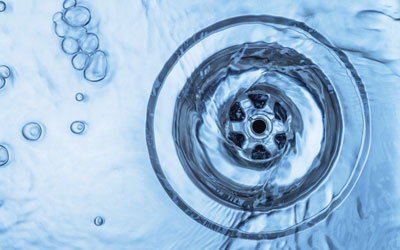Hygienic drain design, sanitisers and drain management
- Like
- Digg
- Del
- Tumblr
- VKontakte
- Buffer
- Love This
- Odnoklassniki
- Meneame
- Blogger
- Amazon
- Yahoo Mail
- Gmail
- AOL
- Newsvine
- HackerNews
- Evernote
- MySpace
- Mail.ru
- Viadeo
- Line
- Comments
- Yummly
- SMS
- Viber
- Telegram
- Subscribe
- Skype
- Facebook Messenger
- Kakao
- LiveJournal
- Yammer
- Edgar
- Fintel
- Mix
- Instapaper
- Copy Link
Posted: 28 October 2015 | Brett Ira, Key Account Manager, ACO Group / James Marsden, Ph.D., Distinguished Professor Food Safety and Security, Kansas State University | No comments yet
The ACO Group is one of the world market leaders in drainage technology. With its integrated approach, ACO stands for professional drainage, economical cleaning, and the controlled release and reuse of water. In an interview for New Food, James Marsden from Kansas State University, put some questions to Brett Ira, Key Account Manager at ACO Group, to further explain hygienic drain design…


In today’s food production environment, the installation of proper drainage is very important for numerous reasons; to keep the food safe from cross contamination, to keep employees safe by minimising the risk of slips and other accidents in the workplace, and to minimise operational costs for a facility by having a proper drainage system in place which enables easy maintenance. As such, James’ first question was: “How are drains engineered to allow for thorough cleaning and sanitation?” Generally the main features that ensure this are rounded inner corners, butt welding of the end caps and outlet, and a removable foul air trap which can be thoroughly cleaned due to the overall design.
“When a drain has a protruding spigot fashioned as a foul air trap, standing water can often be difficult to remove along with any other food particles left after floor cleaning,” explains Brett. “The longevity of the drains also comes into play in this case as a rusted corroding drainage system is often impossible to keep thoroughly clean and free from bacteria and pathogens.” Brett continues to explain that provided the surface is properly treated after the welding of outlet and end caps, stainless steel drains – whether they are made from 1.4301 or 1.4401 grade steel – can increase the life of the drainage system and ensure it is an easily maintained component of a food production environment.
Stainless steel facilitates superior cleaning and sanitation, but if stainless steel is not used, sanitisers could be used instead to provide an on-going antimicrobial effect. In Brett’s opinion, when it comes to the food safety aspects of a food production environment, the only option when looking for a hygienic drainage solution is to choose one constructed from stainless steel: “Often drains are constructed from plastic or cast iron, but both materials are more difficult to clean thoroughly and properly.” Activated time release sanitisers can also be used to reduce build-up of bacteria between cleaning, but cannot take the place of a properly constructed stainless steel drain.
James went on to ask about biofilms – as sanitisers can be used to address the issue of biofilm build-up within drainage. “These sanitisers do have an impact on biofilms and can be more effective on materials such as stainless steel but less effective on Teflon or plastics,” explained Brett. Reduction in biofilm density will always be higher when sanitisers are applied to stainless steel as opposed to other materials. If properly used, sanitisers such as peroxide or QAC will have a minimal effect on drainage when diluted correctly before use and providing that drains are constructed from the proper materials, and include joint welding and the surface treatment of the stainless steel after welding to return it to its original state. Brett continued: “The uses of proper mechanical actions with brushes or pressurised flow systems will ensure a correct removal of the biofilm which was intended by the use of correctly selected sanitisers.”
Moving on from sanitisers to continuous disinfection – for which quat rings can be used in drains – James enquired if this is a process Brett approves of. “Quat rings can be a way of minimising infection of a drainage system, but they are not to be seen as an alternative to a proper maintenance and cleaning regime,” Brett answered. He went on to explain that this should include using the right cleaning agents along with a scheduled regime of manual cleaning to reduce the risk of cross contamination. Quat-based sanitisers often have a lesser effect on Gram – strains, bacterial spores and viruses, limiting the required kill rate.
Certain pathogens, such as Listeria, can be particularly damaging for a food company and therefore must be controlled – James queried if drains are tested to verify control, and what the advantages of regular drainage testing are. “The testing of drains in any site comes down to the planned checks of the quality assurance department, the local food safety authorities and the hiring of an external company to conduct a drainage system assessment within the facility,” Brett answered. Drains should be tested on a frequent basis by internal teams to keep the standards of that plant on par. Internal teams should also conduct overall drainage assessments on a more scheduled basis to reduce the risk of Listeria and pathogen build-up or cross contamination.
Lastly James mentioned drain management programmes – how can they prevent blockages that can result in contaminated water backup and positive air pressure? These type of programmes can assess the current state of the drainage and piping system and potentially reduce the risk of positive air pressure by using CCTV systems to view the inside of the pipes where current build-ups may be, or could, occur. “By implementing a drainage management programme, you can greatly reduce the possibility of microbial build-up and blockage, and ultimately increase the life of your drainage system for years to come,” explains Brett. “Such programmes can be conducted more easily on a high performance stainless steel drainage system. For example, gratings can be lifted without excess effort and all internal components can be easily removed including the silt basket, foul air trap and FAT support ring.”









